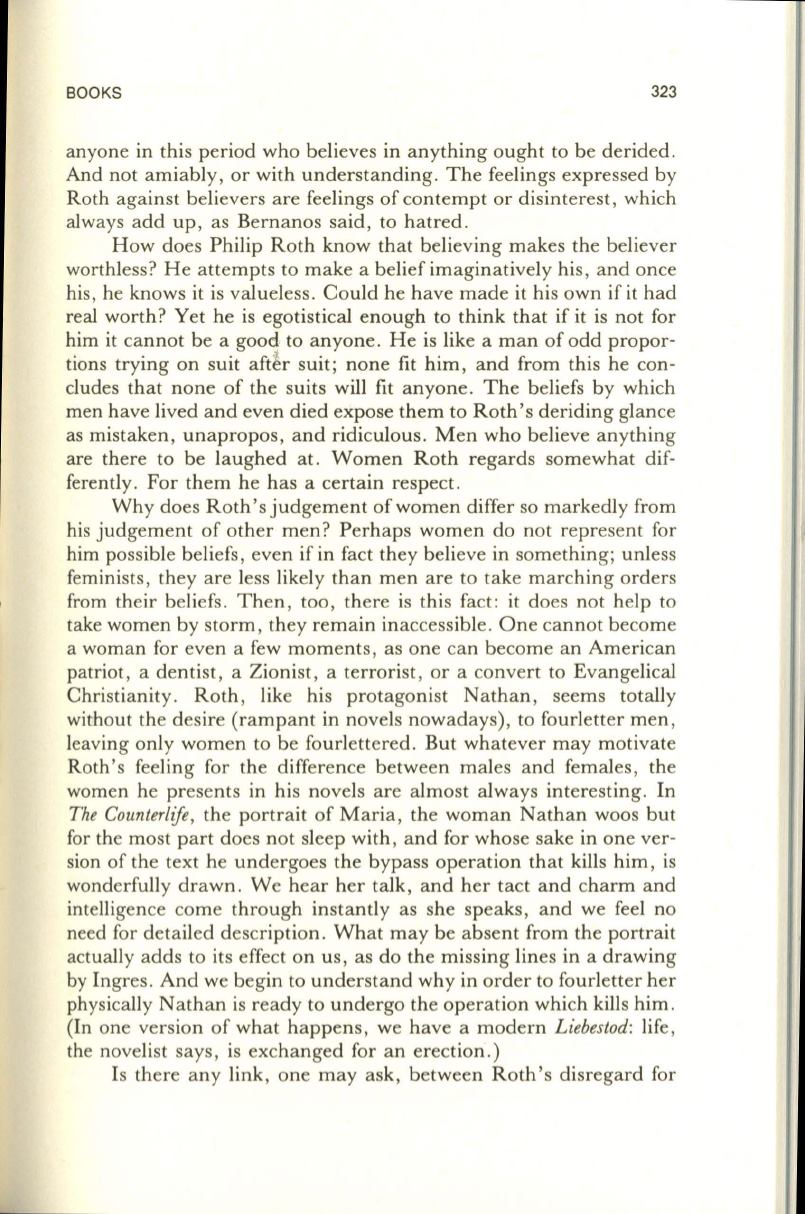
BOOKS
323
anyone in this period who believes in anything ought to be derided .
And not amiably, or with understanding. The feelings expressed by
Roth against believers are feelings of contempt or disinterest, which
always add up, as Bernanos said, to hatred.
How does Philip Roth know that believing makes the believer
worthless? He attempts to make a belief imaginatively his, and once
his, he knows it is valueless. Could he have made it his own if it had
real worth? Yet he is egotistical enough to think that if it is not for
him it cannot be a good to anyone. He is like a man of odd propor–
tions trying on suit aft r suit; none fit him, and from this he con–
cludes that none of the suits will fit anyone. The beliefs by which
men have lived and even died expose them to Roth's deriding glance
as mistaken, unapropos, and ridiculous. Men who believe anything
are there to be laughed at. Women Roth regards somewhat dif–
ferently. For them he has a certain respect.
Why does Roth's judgement of women differ so markedly from
his judgement of other men? Perhaps women do not represent for
him possible beliefs, even if in fact they believe in something; unless
feminists, they are less likely than men are to take marching orders
from their beliefs. Then, too, there is this fact: it does not help to
take women by storm, they remain inaccessible. One cannot become
a woman for even a few moments, as one can become an American
patriot, a dentist, a Zionist, a terrorist, or a convert to Evangelical
Christianity. Roth, like his protagonist Nathan, seems totally
without the desire (rampant in novels nowadays), to fourletter men,
leaving only women to be fourlettered. But whatever may motivate
Roth's feeling for the difference between males and females, the
women he presents in his novels are almost always interesting. In
The Counterlife,
the portrait of Maria, the woman Nathan woos but
for the most part does not sleep with, and for whose sake in one ver–
sion of the text he undergoes the bypass operation that kills him, is
wonderfully drawn. We hear her talk, and her tact and charm and
intelligence come through instantly as she speaks, and we feel no
need for detailed description. What may be absent from the portrait
actually adds to its effect on us, as do the missing lines in a drawing
by Ingres. And we begin to understand why in order to fourletter her
physically Nathan is ready to undergo the operation which kills him.
(In one version of what happens, we have a modern
Liebestod:
life,
the novelist says, is exchanged for an erection.)
Is there any link, one may ask, between Roth's disregard for


